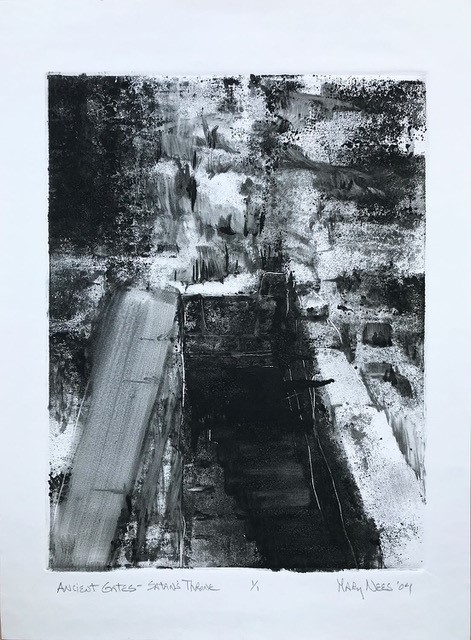A recent article explored the question “Why does craft matter in a digital age” The insights there are worth a look. Here are some snipets from artists trying to explain: Craft is “a way of thinking”, “beyond the cerebral… and through our hands”, “it slows everything down”, “it’s close to the body”. Japanese glass artist, Yoshiaki Kojiro: “Craft is an event that starts with a physical sense of relationship between materials and people.”
 All this and more fascinates me for the Creation account in Genesis 2 has God Himself getting his hands into the dirt, in time, on the ground to make things. Then we are tasked, after His exampling, to make things. It’s in the making that seeing is enhanced. It’s in the time taken and slowed down where relationships are better understood. It’s work, but strangely hope-filled.
All this and more fascinates me for the Creation account in Genesis 2 has God Himself getting his hands into the dirt, in time, on the ground to make things. Then we are tasked, after His exampling, to make things. It’s in the making that seeing is enhanced. It’s in the time taken and slowed down where relationships are better understood. It’s work, but strangely hope-filled.
Yet conversely, in what we call ‘real life’ we talk of “sound bites” and “visual grabs”, about “fake news” and “photo-shopped reality”. All the while we’re racing past what is real, missing the bigger things worth considering that will last all this.
I have been crafting. I’m working on a large oil on paper piece for a show. If I can get it where I want it, I’ll show it here first, maybe in the next post. I also have been crafting a small book. I pressed “approve” this morning, and soon this webpage will offer it for your consideration. The reason for the writing (and it’s taken 6 long years) is because the One who got His own hands into the dirt moved me to take the materials within my grasp of understanding and see if I could make something of it.
 I didn’t stop on the highway to photograph the strange burger-joint billboard, just thought about it for the next, oh- maybe, 30 miles. There was the standard burger, and then the exhortation to “eat like you mean it.”
I didn’t stop on the highway to photograph the strange burger-joint billboard, just thought about it for the next, oh- maybe, 30 miles. There was the standard burger, and then the exhortation to “eat like you mean it.”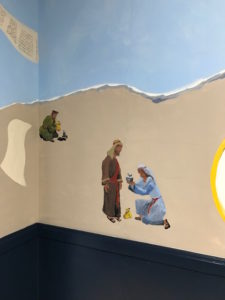 .
.
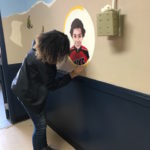
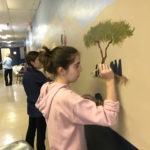

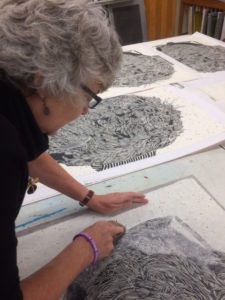 I’m not dressed for printmaking. Instead this one night, I attended an art opening of politically motivated art accompanied by an interesting lecture. The show’s juror,
I’m not dressed for printmaking. Instead this one night, I attended an art opening of politically motivated art accompanied by an interesting lecture. The show’s juror, 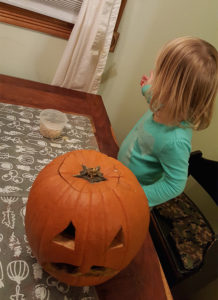 My granddaughter asked “what’s that?” as I was wiping up pumpkin mess. I looked up and saw her pointing to the wall and the round gray mimic cast by our big orange beauty. “That’s a shadow! Do you see how it moves as I slide this over? And if I turn the light off. . . it goes away! Isn’t that amazing? The light is what causes that shadow and the pumpkin is just blocking light on the wall. See, you can do the same thing with your hand: move your fingers and see how you can block the shine and change the shadow’s shape.” So, she got totally engaged with that exercise, and kept twinkling her fingers while I twinkled with thoughts.
My granddaughter asked “what’s that?” as I was wiping up pumpkin mess. I looked up and saw her pointing to the wall and the round gray mimic cast by our big orange beauty. “That’s a shadow! Do you see how it moves as I slide this over? And if I turn the light off. . . it goes away! Isn’t that amazing? The light is what causes that shadow and the pumpkin is just blocking light on the wall. See, you can do the same thing with your hand: move your fingers and see how you can block the shine and change the shadow’s shape.” So, she got totally engaged with that exercise, and kept twinkling her fingers while I twinkled with thoughts. I’m getting some expert help on the mural project we are spearheading for a local non-profit. But this face I reserved to do myself. This little girl is precious, with big ideas, so she is being placed on one of the most important parts of the wall. I love her funky glasses. I love most the reflection out from her eyes and even off the plastic lenses. That was really, really fun to paint!
I’m getting some expert help on the mural project we are spearheading for a local non-profit. But this face I reserved to do myself. This little girl is precious, with big ideas, so she is being placed on one of the most important parts of the wall. I love her funky glasses. I love most the reflection out from her eyes and even off the plastic lenses. That was really, really fun to paint!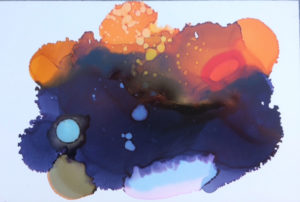 I struggle with my own voice in my work, living as I do in such a time of disintegration. I cannot make the work of my hands “say” what I hold in my heart so often. It is not my goal to be literal, but it is a desire to lift the viewer’s eyes. A friend of mine who is a photographer, grieving deeply over the death of her husband is now doing the best work of her career. We talked of this: why are we doing this work, this searching with images? Is it meaningful, is it what we “should be doing”? We got this far in our discussion: this work is an exploration into JOY. This expression is as fleeting as a sunset and as mysterious as a bird’s flight, but it is necessary, if even just for us. I have some ability to look, and to craft. Maybe through the work of my own hands others will see meaningfully also. For this, I keep on.
I struggle with my own voice in my work, living as I do in such a time of disintegration. I cannot make the work of my hands “say” what I hold in my heart so often. It is not my goal to be literal, but it is a desire to lift the viewer’s eyes. A friend of mine who is a photographer, grieving deeply over the death of her husband is now doing the best work of her career. We talked of this: why are we doing this work, this searching with images? Is it meaningful, is it what we “should be doing”? We got this far in our discussion: this work is an exploration into JOY. This expression is as fleeting as a sunset and as mysterious as a bird’s flight, but it is necessary, if even just for us. I have some ability to look, and to craft. Maybe through the work of my own hands others will see meaningfully also. For this, I keep on.